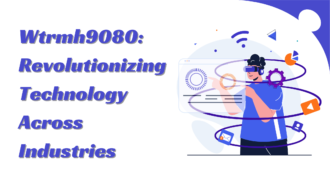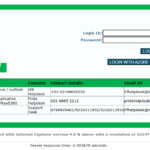Seamless Collaboration: Network Infrastructure for Video Conferencing
- 1 The Importance of Network Infrastructure in Video Conferencing
- 2 Optimizing Network Infrastructure for Video Conferencing
- 2.1 1. Implement Quality of Service (QoS)
- 2.2 2. Upgrade Network Hardware
- 2.3 3. Optimize Wi-Fi Performance
- 2.4 4. Monitor and Maintain Your Network
- 2.5 5. Invest in Redundant Connections
- 3 Boosting Office A/V Systems
- 4 Best Practices for Office Workers
Effective communication is pivotal for successful business operations in today’s digital age. With the surge in remote work and global teams, video conferencing has become a cornerstone of modern collaboration. However, the effectiveness of video conferencing hinges on robust network infrastructure. This blog post will explore key strategies and best practices that IT professionals and office workers can employ to ensure seamless video conferencing experiences.
The Importance of Network Infrastructure in Video Conferencing
Before diving into the technicalities, it’s essential to understand why network infrastructure is critical for video conferencing solutions. A well-optimized network ensures:
- High-Quality Video and Audio: Prevents lags, delays, and poor-quality streams.
- Stable Connections: Reduces the chances of dropped calls and connectivity issues.
- Scalability: Supports multiple participants without compromising performance.
Assessing Your Network’s Readiness
To deliver a flawless video conferencing experience, you must first evaluate your current network setup. Here are some steps to assess network readiness:
- Bandwidth Analysis: Ensure your network has sufficient bandwidth to handle video calls, especially during peak hours. Tools like the Ookla Speed Test can provide insights into your bandwidth capabilities.
- Latency Check: Low latency is crucial for real-time communication. Aim for latency below 150ms for optimal performance.
- Packet Loss Monitoring: High packet loss can disrupt video streams. Use network monitoring tools to keep packet loss below 1%.
Choosing the Right Video Conferencing Solutions
Selecting the appropriate video conferencing platform can significantly impact your network’s performance. When evaluating solutions, consider the following:
- Compatibility: Ensure the platform is compatible with your existing hardware and software.
- Scalability: Choose a solution that can grow with your business needs.
- Security: Opt for platforms with robust security features to protect sensitive information.
Optimizing Network Infrastructure for Video Conferencing
1. Implement Quality of Service (QoS)
Quality of Service (QoS) settings prioritize video conferencing traffic over other data types. By configuring QoS on routers and switches, you can ensure that video calls receive the necessary bandwidth, reducing the risk of interruptions.
2. Upgrade Network Hardware
Outdated hardware can be a bottleneck for video conferencing. Consider upgrading to:
- High-Performance Routers and Switches: These devices can handle higher data traffic and perform better.
- Mesh Wi-Fi Systems: For larger offices, mesh Wi-Fi systems provide comprehensive coverage and reduce dead zones.
3. Optimize Wi-Fi Performance
A strong Wi-Fi signal is vital for wireless video conferencing. To enhance Wi-Fi performance:
- Position Access Points Strategically: Place access points in central locations to maximize coverage.
- Use Dual-Band or Tri-Band Routers: These routers can manage more devices simultaneously without congestion.
- Minimize Interference: Reduce interference from other electronic devices and neighboring networks.
4. Monitor and Maintain Your Network
Regular network maintenance is essential for sustained performance. IT professionals should:
- Conduct Routine Audits: Regularly check and resolve any network issues promptly.
- Update Firmware and Software: Ensure all network devices and conferencing software are up-to-date.
- Analyze Usage Patterns: Use analytics tools to identify peak usage times and potential bottlenecks.
5. Invest in Redundant Connections
Redundancy minimizes the impact of network failures. Consider:
- Secondary Internet Connections: A backup internet connection can keep video conferencing running smoothly in case of primary connection issues.
- Load Balancers: These devices evenly distribute network traffic, preventing any connection overload.
Boosting Office A/V Systems
Upgrading your office’s audio-visual (AV) systems is crucial for improving video conferencing quality. High-quality microphones, speakers, and cameras can significantly enhance the clarity and fidelity of audio and video, respectively. Consider integrating AV systems that support noise cancellation and HD video to ensure that every participant can hear and be seen clearly, without the distractions of background noise or poor video quality.
When coupled with a robust network infrastructure, these enhancements can elevate the overall video conferencing experience, making meetings more productive and engaging. By investing in state-of-the-art AV technology, businesses can create a more immersive and compelling communication environment for their teams.
Best Practices for Office Workers
Even with a robust network, user behavior can influence video conferencing quality. Here are some tips for office workers:
- Check Your Tech: Before the meeting, ensure your camera, microphone, and speakers/headphones are working correctly. Test them in advance to avoid technical issues during the call.
- Choose a Quiet Location: Find a quiet, well-lit space for the call to minimize distractions and ensure clear communication. Avoid areas with background noise or interruptions.
- Dress Appropriately: Dress as you would for an in-person meeting unless otherwise specified. Remember, you’re still in a professional setting even though you’re at home.
- Mind Your Background: Choose a neutral or professional background for video calls. Make sure it’s tidy and free from anything distracting or inappropriate.
- Maintain Eye Contact: Look into the camera when speaking to simulate eye contact and show engagement. Avoid constantly looking at yourself on the screen, as it can be distracting.
- Stay Engaged: Actively participate in the meeting by listening attentively, nodding, and providing feedback when appropriate. Avoid multitasking or checking emails during the call.
- Use Nonverbal Cues: Since it’s harder to pick up on nonverbal cues in virtual meetings, use gestures, facial expressions, and nodding to show agreement or understanding.
- Mute When Not Speaking: To minimize background noise, mute your microphone when you’re not talking. Remember to unmute when you want to contribute to the conversation.
- Avoid Interruptions: Let others in your space know when you’ll be in a meeting to minimize interruptions—close unnecessary tabs or applications on your computer to avoid distractions.
- Test Connectivity: Check your internet connection before the call and close bandwidth-heavy applications to ensure a smooth video conferencing experience.
- Be Punctual: Join the meeting on time to show respect for others’ schedules. If you cannot attend or will be late, notify the organizer in advance.
- Follow Meeting Etiquette: Adhere to the meeting agenda, avoid talking over others, and be concise in your contributions to keep the discussion focused and productive.
Conclusion
Ensuring seamless video conferencing requires a multifaceted approach, combining robust network infrastructure with strategic optimization techniques. By understanding and implementing the best practices outlined above, IT professionals and office workers can significantly enhance their video conferencing experiences, leading to better collaboration and productivity.
Investing time and resources into your network infrastructure today will pay dividends in inefficient communication and smooth operations tomorrow. So, please take the necessary steps to upgrade, optimize, and maintain your network, ensuring that your video conferencing solutions are always at their best.


















